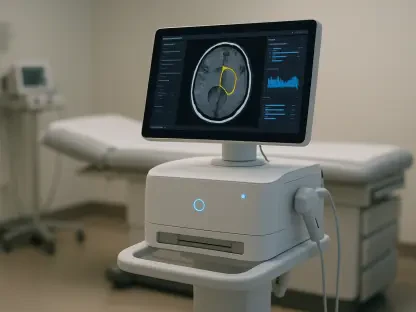Setting the Stage for Virtual Care’s Financial Puzzle
In an era where digital transformation is reshaping healthcare, virtual care stands as a beacon of innovation, promising enhanced access and patient engagement. Yet, a startling reality emerges from recent industry surveys: fewer than 30% of health system leaders report significant return on investment (ROI) from most virtual care services. This gap between expectation and financial outcome poses a critical challenge for hospitals and health systems across the United States. The purpose of this market analysis is to dissect the trends, barriers, and projections surrounding virtual care adoption, shedding light on why profitability remains elusive. By delving into current data and strategic insights, this examination aims to equip industry stakeholders with a clearer understanding of virtual care’s economic landscape and its implications for future growth.
Diving Deep into Market Trends and Financial Realities
Adoption Surge Meets Financial Headwinds
Virtual care has seen remarkable uptake among health systems, driven by a pressing need for accessible and efficient healthcare delivery. Nearly 60% of surveyed health system executives report offering services such as virtual primary care and remote patient monitoring, reflecting a robust integration of digital tools into mainstream operations. However, the financial returns paint a less rosy picture. Only a small fraction—10%—of leaders note substantial ROI from virtual primary care visits, with many services merely breaking even or yielding marginal gains. This disconnect highlights a broader market trend: while virtual care enhances operational reach and patient satisfaction, translating these benefits into revenue remains a significant hurdle for most organizations.
Disparities in Service-Specific Returns
Not all virtual care offerings struggle equally in the financial arena, revealing a nuanced market dynamic. Virtual triage in emergency departments, though adopted by just 10% of respondents, stands out with 56% of users reporting significant ROI. This stark contrast with broader services like virtual primary care suggests that targeted, high-impact applications may hold the key to unlocking profitability. The market implication is clear—health systems could benefit from a strategic pivot toward niche use cases that address specific, high-cost pain points. Yet, scaling these successful models across diverse patient populations and operational frameworks introduces additional complexities, including technology integration and staff training challenges.
Infrastructure Investments and Policy Constraints
The virtual care market is also shaped by substantial infrastructure demands and regulatory uncertainties that weigh heavily on financial outcomes. Over 22% of health system leaders anticipate the need to upgrade or replace their virtual care platforms within the next one to three years, pointing to ongoing capital expenditures that strain budgets. Compounding this issue are reimbursement ambiguities, particularly with recent lapses in Medicare telehealth flexibilities amid governmental budget disputes as of early this year. These policy gaps create a precarious environment where health systems must innovate without guaranteed funding, further clouding ROI projections. Market players face a delicate balance between sustaining technological advancements and navigating an unpredictable fiscal landscape.
Projecting Future Growth and Innovation
Looking ahead, the virtual care market is poised for evolution, with technological advancements and policy reforms potentially reshaping ROI trajectories. Emerging tools like AI-driven triage systems and sophisticated remote monitoring solutions could streamline operations and enhance clinical outcomes, offering a pathway to improved financial returns. Additionally, if advocacy for permanent telehealth reimbursement policies gains momentum, health systems might encounter more favorable economic conditions within the next few years, from this year to 2027. However, these opportunities come with caveats, including heightened competition among digital health vendors and rising cybersecurity risks. Market forecasts suggest that data analytics will play a pivotal role in identifying high-value virtual care opportunities, enabling more precise investment strategies in the coming years.
Reflecting on Insights and Charting Strategic Paths Forward
Looking back on this analysis, it becomes evident that the virtual care market presents a complex interplay of opportunity and challenge for U.S. health systems. The widespread adoption underscores a transformative shift toward digital healthcare, yet the persistent struggle to achieve significant ROI reveals deep-seated financial and operational barriers. Disparities in returns across service types, coupled with infrastructure costs and policy uncertainties, paint a picture of a market still grappling with sustainability.
Moving forward, health systems are encouraged to prioritize high-ROI applications like virtual triage, focusing resources on proven value drivers rather than broad, unprofitable rollouts. Strategic investments in interoperable technology platforms could mitigate long-term costs, while collaborative advocacy for clearer reimbursement frameworks might stabilize funding. Beyond these steps, leveraging advanced analytics to tailor virtual care offerings to specific patient needs emerges as a critical next move. As the market continues to mature, health systems that adapt with precision and foresight stand the best chance of turning virtual care into a true economic asset.









